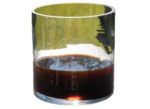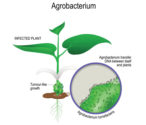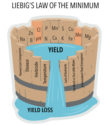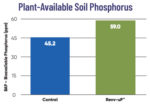Advertise Follow Us
Articles by Dan Crummett
Ahead of the Curve
Soileos chemically bonds carbon-rich waste cellulose products & trace elements to form bioavailable plant nutrients
Read More
Treat Soil Samples Right for More Accurate Fertilizer Prescriptions
Studies show storage of soil samples & sample bag type affect soil health test results
Read More
5% Makes a Big Difference in Waterhemp Control
Escapes go a long way toward decreasing corn yields & add to herbicide-resistance woes in the long run
Read More
Ahead of the Curve
Harnessing the Power of Smoke to Promote Plant Growth
California company turns burned pistachio shells into a plant-growth & soil enhancer
Read More
Economic Savings, Loss Reductions Compound with No-Till
Income analysis shows operation saves $44 per acre by using no-till, cover crops & split-applied nutrients
Read More
Ahead of the Curve
Genetic Engineering Discovery Accelerates Hybrid Development
Purdue University researchers discovered a key to reducing long periods of genetic engineering procedures to express improved traits in plants
Read More
Is Your Mindset Causing a Yield Drag on Your No-Till Corn?
Taking an honest look at what is acceptable performance on your farm and challenging yourself to ask why can help you boost yields
Read More
Winter Maintenance Tips for Your No-Till Planter
Check these wear point fundamentals & non-wear points on your no-till planter to ensure it’s ready for spring
Read More
Ahead of the Curve
Bacteria Strain Serves Up Plant-Available Phosphates
Found growing naturally in a phosphorus mine, rhizobacteria are being harnessed to boost phosphorus cycling in corn fields
Read More
Ahead of the Curve
Waste Products from Ocean Come to Farm
Tidal Grow AgriScience's marine-waste-derived biomolecules boost the effectiveness of fungicides, fight nematodes & provide early-season support for seedling no-till crops
Read More













